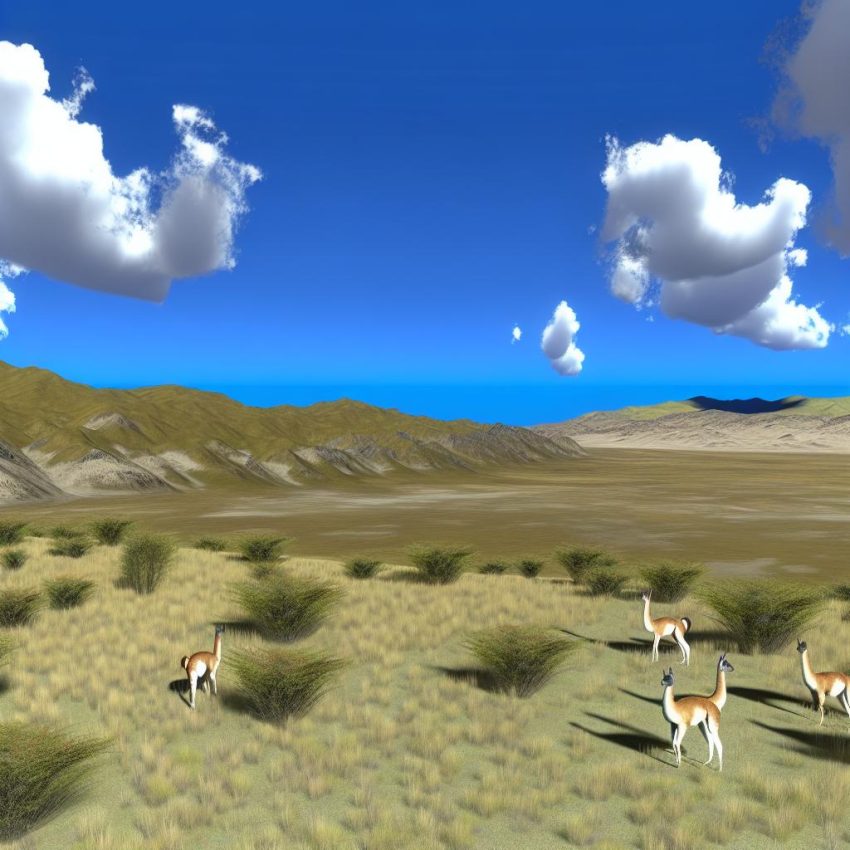Overview of Lihué Calel National Park
Lihué Calel National Park, established in 1977, is located in the province of La Pampa, Argentina. This national park covers an impressive area of approximately 32,514 hectares, representing a dedication to the preservation of the region’s unique biodiversity and cultural heritage. The name “Lihué Calel” is derived from the Mapuche language, meaning “Mountains of Life”. This nomenclature underscores the historical and environmental significance of the park, as it mirrors the complex interplay between the natural environment and the cultural narratives of its early inhabitants.
Geography and Climate
Situated in the pampas region, Lihué Calel National Park showcases undulating landscapes that offer a glimpse into the natural beauty and ecological richness of the area. These landscapes are characterized by low mountain ranges, expansive plains, and serene valleys that create a picturesque environment for both exploration and conservation. The park acts as a critical transition zone between the humid pampas to the east and the more arid regions to the west, thus fostering a unique blend of ecological attributes.
The climate within the park is best described as semi-arid, defined by hot summers that give way to mild winters. The average annual rainfall is relatively low, adding an additional layer of complexity to the park’s ecological dynamics. This climatic condition significantly influences the types of flora and fauna found within the park, promoting the development of adaptations that are well-suited to these semi-arid conditions.
Flora and Fauna
Lihué Calel National Park is home to an astonishing variety of plant species, each adapted to the semi-arid environment that characterizes the region. The vegetation is a tapestry of native grasslands interspersed with shrubs and small forests primarily consisting of trees such as Prosopis (algarrobo) and Celtis ehrenbergiana (tala). These plant communities not only offer a colorful mosaic of life but also provide essential habitats for the park’s diverse fauna.
The fauna within Lihué Calel is equally notable for its diversity and adaptability. Large mammals like guanacos roam the park’s open spaces, while smaller mammals such as armadillos and foxes make their homes in the varied terrain. For bird enthusiasts, the park offers a haven with numerous avian species, including the striking red-legged seriema and the majestic black-chested buzzard-eagle, both of which can often be seen soaring above the park’s valleys and plains.
Cultural Significance
Beyond its natural allure, Lihué Calel has significant cultural importance. The park is home to ancient petroglyphs, rock engravings meticulously created by indigenous peoples who lived in the region long before European settlers arrived. These petroglyphs serve as historical records, offering valuable insights into the cultural practices, symbolism, and beliefs of the region’s early inhabitants. The presence of these ancient artworks underscores the profound connection between humans and their environment, highlighting the park’s role as a custodian of both natural and cultural heritage.
Visiting the Park
Visitors to Lihué Calel National Park can immerse themselves in a wide array of activities designed to enhance their understanding and appreciation of the park’s unique features. Exploring the numerous hiking trails within the park is a popular activity; these trails, varying in difficulty, cater to visitors of all abilities and offer a chance to experience the diverse landscapes up close. Additionally, activities such as picnicking, wildlife observation, and photography are favored pursuits that allow for a more personalized interaction with the park’s environment.
The park’s visitor center serves as a hub of knowledge and discovery. It provides educational materials and insights into the park’s eclectic ecology and rich cultural history, helping visitors gain a deeper appreciation for both the natural and historical aspects of Lihué Calel. For those interested in planning a visit, obtaining access permits, or learning about ongoing conservation efforts, additional information is available through the official website of the Argentine National Parks Administration.
To ensure the continued preservation of Lihué Calel’s ecological and cultural treasures, the park operates under specific guidelines designed to protect its resources. Visitors are encouraged to adhere to these regulations, reflecting a shared responsibility for the conservation of this cherished landscape. Observing these guidelines not only supports the park’s mission but also enhances the visitor experience by fostering a respectful and sustainable interaction with the environment and its historical artifacts.
In conclusion, Lihué Calel National Park is much more than a protected area; it is a living testament to the intricate interplay between nature and culture. Established to preserve both biodiversity and cultural artifacts, the park offers a unique opportunity for exploration and education. By visiting Lihué Calel, individuals contribute to a larger narrative of conservation and respect for the natural world, ensuring the park remains a vibrant and vital part of Argentina’s heritage.

